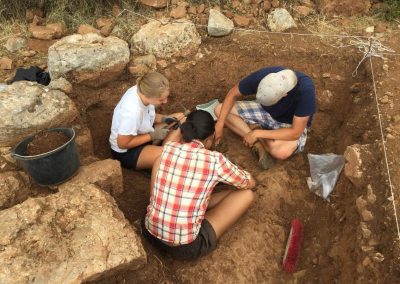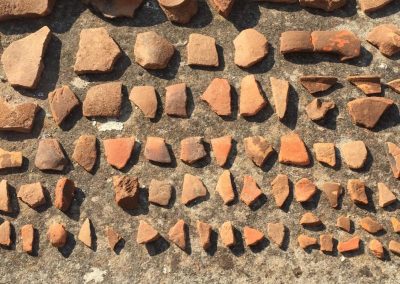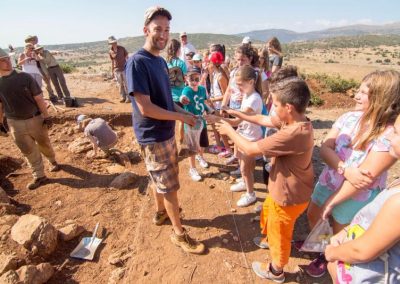Stephen Guerriero, a social studies teacher at High Rock, was awarded a grant from the NEF to participate in an archaeological dig in Phocis, Greece over the summer. He will incorporate much of what he learned into High Rock’s archaeology curriculum in the coming year.
He shared his experiences with the NEF:
“I am so happy to share with you some of my experiences that I had this summer as a participant and trench supervisor at the Kastrouli-Desfina Field School and Excavation.
The Kastrouli archaeological site consists of a large, terraced hilltop outside of the small village of Desfina in the region of Phocis, Greece. I arrived in Desfina, Greece at the beginning of July and stayed just about four weeks. The 2018 season’s main goal was to uncover areas of use around a large, exposed wall from the Late Mycenaean period.
I worked as a trench supervisor for one of the three trenches that we opened in Kastrouli. The days consisted of a 5:30 AM wake up, quick coffee, and then up to the dig site. Each morning, a shepherd walked his flock of goats by our site on their way to graze. Our terrace overlooked the entire valley below. The soil in Greece is dry, dusty, and hard-packed. My team worked to uncover several foundation walls, discovered pottery sherds dating from between the Late Bronze Age to the early Iron Age (1300 – 1000 BCE). We also discovered fragments of human remains and animal remains, as well as fire pits, plaster, and evidence of massive destruction. We stopped our digging for a “drone break” at 11:00 AM At this time, Ian Roy, the head of the Brandeis University MakerLab, would fly his high-powered drone overhead and photograph the entire site. Each day, his photogrammetry runs would generate hundreds of images and gigabytes of data. These images were used to generate both 3-D models of the site, and to put together time-lapse animations of each trench’s progress. The overhead images were especially important in analyzing the site and planning each day’s digging.
By 1:30 PM, we finished digging for the day because the summer sun in Greece is intense, and temperatures were often over 90ºF. After lunch, we washed, photographed, and “read” the pottery found that day. This means we were able to make preliminary judgments about the context, dating, and usage of the site based upon the pottery sherds we were finding. Later, we attended lectures and seminars from faculty members of Brandeis, Wesleyan, and the University of the Aegean. These included talks and workshops about the Bronze Age collapse, pottery reading, conservation, local History, advanced archaeological methods. We also traveled throughout the regions of Phocis and Boetia to see similar sites of occupation, visit museums, and have a guided tour throughout the famous archaeological park of Delphi, which includes the Sanctuary of Apollo, the home of the oracle.
My work has been to document my experiences for my students and colleagues, to bring back the latest in archaeological field methods and practices, and to see first-hand the newest technology in use. I’m so excited to share all of this with my students, especially the drone-based photogrammetry, 3-D imagery, 3-D printing of artifacts, and the use of GPS satellites. I know my kids will have a more dynamic, interactive, and richer learning experience because of the NEF’s support!”



